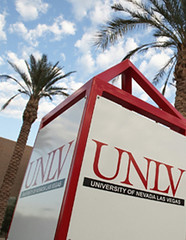As an optional assignment for students of my "Writing for Public Relations" class, I offered to become the subject of their project by answering 10 questions (with 5 follow-up questions as they deemed necessary). From Internet research and answers to these questions, the assignment was to write a 2-page news or feature release about me or the company.
The assignment presents an interesting opportunity to practice a real life client-story exploratory, applying economy with interview questions, working around communication and time limits, building a story from interview answers, additional research to fill in blanks, and, of course, writing a news or feature release while adhering to AP Style, etc. In sum, it's not an easy assignment, but certainly a worthwhile instructional exercise.
At the risk of publishing an overly gratuitous post, I thought I would share the first round of questions and answers, edited a bit to make the session more palatable. (By the way, the boon for the student is that I doubt I'll ever forget her after she took on an extra assignment for the sake of learning.)
Q: Did you open Copywrite, Ink. in 1991?A: Yes, but not as Copywrite, Ink. I originally entered the Las Vegas market, after returning from Reno, Nev. as a freelance writer because advertising agencies in Las Vegas, impacted by a recession, were not hiring copywriters or creative directors with a writing background. They were more interested in account executives and graphic designers who understood the computer graphics programs that were coming out at the time.
My first client was Collins Communications. I had worked in-house with Cathy Collins for about two months. We decided we liked each other's work, but could not coexist under the same roof, mainly because she wanted an account executive too. Collins started her business after leaving R&R Advertising (now R&R Partners). I still miss working with her (may she rest in peace) and sometimes wonder what would have happened if I took over her agency like she hoped I would one day.
Anyway, the name Copywrite, Ink. was introduced in late 1992 because a production company I worked with suggested "freelancer" meant "looking for employment." Turns out the producer was right. A few years later, we incorporated.
Q: How many awards have you won?A: I've made it a point never to count awards because I believe that awards should be the sequel, never the pilot. That is my cute way of saying that the goal should always be about results for the client before anything else. I do know, however, we've won more than 100 awards in every medium, from news releases and articles to television commercials and total integrated communication plans. I've been honored with some professional awards too, over the years.
Q: Are there any you are especially proud of?A: If I had to choose, I would have to say the Community Achievement Award from the Las Vegas Chamber of Commerce because it recognizes professionals for contributions in their community as well as their profession. I received that in 1999, which seemed like a considerable accomplishment given my age and the caliber of the other nominees in my category.
The other one that always comes to mind is Outstanding Small Chapter of the Year from the International Association of Business Communicators. The Las Vegas chapter received the award after my term as president (for my term). I appreciated it, not for me as much as for the board. Every one of my board members met every goal we set and then some, moving the chapter from small to medium in the course of a single year. This was also important because it helped reinforce that Las Vegas did have credible business communicators at a time when this community was not taken seriously in the field.
Q: What was your first award?A: My first award was in Cub Scouts, but I think you're asking about those related to the field. My first advertising-related award was for a traffic safety poster contest sponsored by the City of Las Vegas in 1986. I didn't even know I was going to pursue a career in advertising or communication, but it was still a pretty big deal for a high school senior. We were taken to lunch and met the mayor.
Q: Why do you think you are so recognized?A: Well, every award program has different criteria (some even dedicate entire workshops on how to prepare a work plan), so it would take considerable time to explain in some cases. However, I can safely say it has NOTHING to do with the budget.
That aside, I can also say that I am blessed to work with some of the best people in the business — clients and vendors alike. As with most things, the better the team, the better your chance to produce results. For example, we're up for an award
this weekend. I teamed with a designer in Seattle to do it. We blended our ideas, he executed some drafts, and I refined it. We also had a client who was very receptive to ideas despite a small budget. The end result is a powerful logo that will help the client meet his objectives. Teamwork.
Of course, this assumes you enter. We work with several clients who enter awards programs. Surprisingly, we don't enter too much; our clients do. However, when we do enter, we do it to as a means to earn recognition for our clients and vendors.
Q: Is there a certain person in your field that you admire?A: I have always been fond of David Ogilvy for two reasons: he believed that every advertisement is part of the long-term investment in the personality of the brand; and one of my professors, years ago, was Bourne Morris, a former president of Ogilvy & Mather.
If you want me to pick someone closer to home, I have to recognize Keith Sheldon, ABC, APR, who was largely responsible for encouraging me to go beyond advertising and begin thinking in terms of strategic communication. He pointed me in a direction that changed the way I think about communication and perception in general. If I quote anyone in class most often, it would be him. Besides that, he's a fun person to travel with while in Mexico.
Q: Has there been an award that you received that you felt should have gone to someone else?A: No, but mostly because most advertising/communication award programs are not structured to only have one winner. The work competes with nothing but the judges' sense of what is considered best in the field.
However, going back to the Community Achievement Award, I was in a category with Michael Berk, producer of Baywatch. To be honest, I didn't think I had a prayer. (He received an award in a different category the following year).
Q: Where do you see yourself in 10 years?A: Good question. I think the answer to that rests on the integration of technology. I believe that we are moving to have all communication and entertainment devices combined into one media. If we continue on the path we are on and people can tune into a blog or vlog as easily as they thumb through cable stations today, then I think we're headed for a real shake-up of how we perceive traditional media. The future applications of social media are just being written today.
Of course, I'd like to continue working with the clients we have, even if we eventually relocate to another city. Thanks to the Internet, location is becoming meaningless. Right now, about 50 percent of our work is out of market. New Hampshire and Washington are among our top picks. But that's a few years down the road. We contribute to whatever community we live in.
Q: How do you give back to the community?A: Currently, I serve as a governor-appointed state commissioner, accreditation examiner for IABC, part-time instructor at UNLV, and co-sponsor of the Nevada Business Community Blog to name a few. Traditionally, we've donated our time to improve communication for various nonprofit and professional organizations locally, regionally, nationally, and internationally. Since 1991, we've probably assisted 30+ organizations. Recently, we signed an agreement with a non-profit organization to sponsor a product fund-raising idea for them in the near future, but we're not ready to release the details. Regardless of the effort however, I have always felt giving back to the community and profession is essential. It's just part of who I am.
Q: If you had to do it all over again, would you do anything differently in regard to your career?A: Yeah, yesterday would be nice to do over. Ha! I'm joking. Look, I used to think that I would like to do a lot over again, but I don't anymore. There is no right and wrong to any decision, provided we learn something from it.
I mean … would I like to have $50,000 in cash rather than $50,000 in worthless stock from one company I did work for? Or would I have liked two subsidiary ventures to survive after 9-11? Well, yeah, I suppose so … but then again, if I didn't have those experiences, maybe I would not be where I am today. I like where I am today and where I am going, so I guess I would do it all over again the same way. You know, it might have been nice to learn some mistakes don't mean the end of the world (even though it feels like it) much earlier in life, but that's part of experience. Good. Bad. Indifferent. Might as well enjoy it.
Good job, Tracy. Only a few were closed, potentially yes or no answers. Look forward to seeing what you do with it.

























